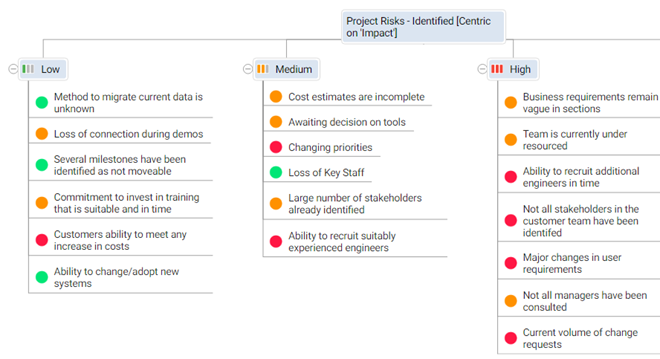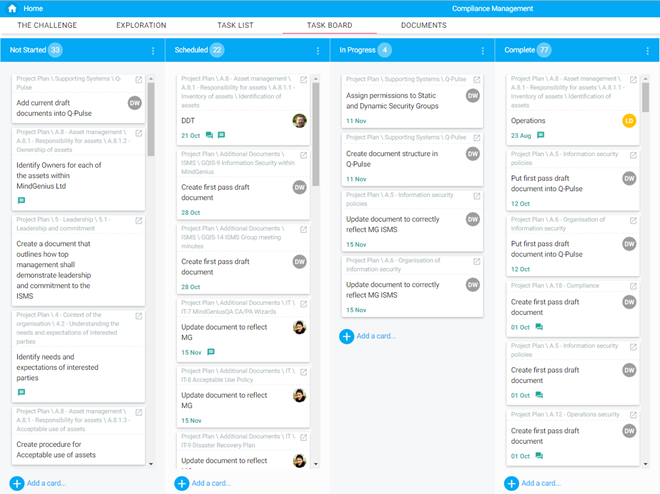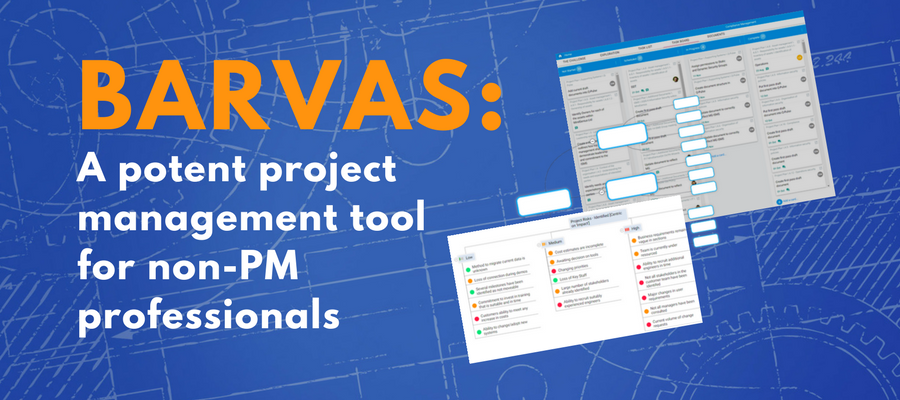In January, Scottish software developer MindGenius launched Barvas, an ambitious web-based platform designed around the needs of ad hoc project managers. I recently caught up with CEO Ashley Marron and founder Donald Maciver to learn more about the thinking behind Barvas and what this means to the future direction of the company.
Chuck Frey: What’s changing in the nature of work that convinced you an application like Barvas was needed?
Ashley Marron: It was becoming clear to us that our historical architecture, which was tied to a single PC operating system, was becoming a thing of the past. Today, people expect to move seamlessly between multiple platforms and have access to their data in the cloud, no matter where they are. We also looked at the adoption curve of software as a service (SaaS) applications, and discovered that they are increasingly accepted by corporations. According to one survey we looked at, 50% of corporations look at it favorably today. That number is expected to increase to 80% in three years and five years from now, it won’t even be an issue. It will be fully accepted as the standard way of doing business.
We also noticed that non-project managers are increasingly getting pulled into managing projects. They have a different set of needs than professional project managers that no one seemed to be addressing. These executives just kind of get thrust into managing projects, but nobody provides them with tools to help them do so. That looked like an opportunity to us.
Finally, dedicated project management software picks up a project from the point of you knowing what to do. Barvas starts much earlier in helping you identify the problems you need to solve and brainstorming the solutions that lead to the project. We designed Barvas to enable teams to break down any challenge and work out the best way forward.
For those companies who already own project management software, they can use Barvas as a front-end “project design” tool, and then transfer the resulting data into their preferred PM tool. Otherwise, teams can handle everything from project design to implementation and wrap-up within Barvas.
Frey: It’s very clear looking at Barvas that it has a very strong process orientation. Tell me about that.
 Donald Maciver: Our goal is to create a platform that will help teams with their “jobs to be done” as they relate to a project. We want to help them manage ad hoc projects from start to finish. Obviously, the mind map is a powerful tool for project design and brainstorming. From there we wanted to be able to move to other views of the data for project implementation and status, and make it easy to share key project data in flexible ways with members of their teams.
Donald Maciver: Our goal is to create a platform that will help teams with their “jobs to be done” as they relate to a project. We want to help them manage ad hoc projects from start to finish. Obviously, the mind map is a powerful tool for project design and brainstorming. From there we wanted to be able to move to other views of the data for project implementation and status, and make it easy to share key project data in flexible ways with members of their teams.
We decided to adopt some of the principles of agile project management to Barvas. That’s why you will see a Kanban board view incorporated into it. Being able to have great clarity on what needs to be done and making that information easy to share and digest is critical. This capability makes it possible for executives to hand off a project to someone else midstream, with a minimal learning curve.
Frey: How does the concept of challenges fit into the philosophy behind Barvas?
Maciver: it’s the central focus of this application. As we see it, every team and every organization faces challenges, whether they are related to the marketplace, external competition or fighting internally for limited resources. Our goal with Barvas is to provide teams with tools that help them find a way through those challenges via focused activity.
Frey: What does this mean to MindGenius, your PC-based mind mapping program? Will you eventually phase it out in favor of the Barvas, which is a cloud-based platform?
Maciver: There’s no question that MindGenius and Barvas will coexist. There are many people using MindGenius for many different creative applications. What we decided to do with Barvas was focused on one specific set of needs within a specific application – project management. Over time, we will update MindGenius with some of the functionality in Barvas, but the two will never be exactly the same. Eventually, we will need to rebuild the program so that it can communicate with the cloud-based version. That’s all part of our product roadmap.
Frey: I noticed that Barvas provides several new views of project data. Please tell me about those.
 Maciver: Yes, one of the capabilities we’ve incorporated into the product is something we call Category View. It enables teams to “pivot” the project data around a set of categories and display the mind map’s data re-grouped around those categories in an org-chart type of format. This enables you to look at different slices of your project and focus on them – for example, a grouping of tasks assigned to one person or a set of resources that are all part of one division or department. Category View also gives you a different collection of data and resources in one place that would otherwise be scattered around the mind map.
Maciver: Yes, one of the capabilities we’ve incorporated into the product is something we call Category View. It enables teams to “pivot” the project data around a set of categories and display the mind map’s data re-grouped around those categories in an org-chart type of format. This enables you to look at different slices of your project and focus on them – for example, a grouping of tasks assigned to one person or a set of resources that are all part of one division or department. Category View also gives you a different collection of data and resources in one place that would otherwise be scattered around the mind map.
Barvas also includes a kanban board, which is a good way to see which tasks are on track and which are falling behind. We also plan to strengthen Barvas’ process orientation with the addition of a Gantt chart. That will be added in a future release. Why? because some projects are very process oriented and don’t really benefit from a Kanban view. For example, building a house. When you do so, there are so many steps in the process that are dependent upon each other. It’s very timeline based. You’d never dream of trying to manage a project like that in a kanban board.
Frey: What are some uses of categories?
Maciver: One obvious one is to create categories that are focused around the people on your team. This enables you to pull together a view of tasks assigned by person. Another very valuable one is to tag tasks based on value and impact. This would enable you, for example, to quickly identify high-impact/low-cost tasks that would be very attractive to get done first in order to build momentum on a project. It would also help to prevent the team from spinning its wheels by avoiding low impact/high-cost activities.
Frey: How has the nature of project management changed?
Marron: Traditional project management techniques tend to be very rigid, which makes them increasingly out of step with today’s business world. Yet some of their underlying thinking still has a lot of value today. At the same time, agile has been finding its way into many parts of organizations. We aim to take the best of both worlds provide a toolset that is uniquely tailored to the needs of today’s businesses.
Frey: What are some of the ways you’re trying to reduce complexity for project managers?
Maciver: We recognize that many projects are multi-faceted, and may actually consist of a master project plus numerous sub-projects within it. We’ve built that philosophy into Barvas and have designed it so that executives can easily move between sub-projects – something that’s fairly easy to do in a cloud environment. Each person in the team has their own personal workspace, wher tghey can view and manage the tasks they have been actioned with across all projects.
Frey: What’s next for Barvas?
Maciver: Watch for frequent updates to it in the weeks and months ahead. We are on a two-week release cycle, which means we are aggressively adding and improving features and functionality to it.


Leave a Reply